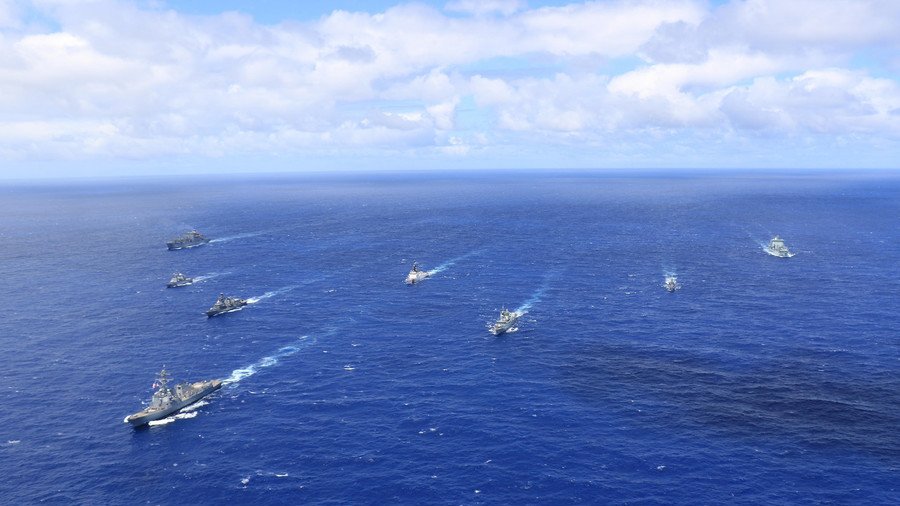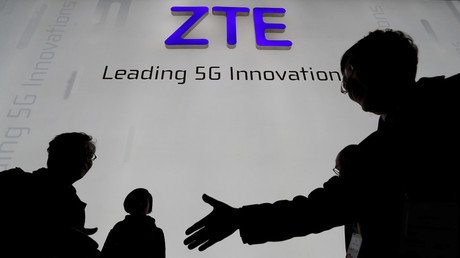Threats, conditions & loopholes: $716bn NDAA takes on Turkey, China and India

The US House of Representatives has approved the 2019 National Defense Authorization Act (NDAA), allocating $716 billion to the US military. Here are some of the massive bill’s more interesting provisions.
The House Resolution 5515, also known as the John S. McCain National Defense Authorization Act for the fiscal year 2019, passed on the House floor on Thursday, with 359 representatives in favor and 54 opposed, most of them Democrats. If the Senate approves it on schedule, it would be the first NDAA in almost 20 years to be passed ahead of the fiscal year start on October 1.
Much of the bill extends and recycles provisions from previous NDAAs, but the conference report submitted by Rep. Mac Thornberry (R-Texas), chairman of the House Armed Services Committee, contains some intriguing provisions.
Banning China from RIMPAC and telecoms
The Senate draft of the NDAA would have banned China’s ZTE Corporation and any of its affiliates or subsidiaries from doing any business with US government or private sector companies, but the latter provision was dropped in the compromise bill.
Section 889 still bans government purchases of ZTE and Huawei equipment, for the purpose of “public safety, security of government facilities, physical security surveillance of critical infrastructure, and other national security purposes.”
Hytera Communications Corporation, Hangzhou Hikvision Digital Technology Company, and Dahua Technology Company are also listed in the ban.
Furthermore, Section 1259 bars the People’s Liberation Army Navy from participating in the Rim of the Pacific (RIMPAC) multinational maritime exercises for at least four years.
Before allowing China to attend RIMPAC, the Pentagon will have to certify to congressional defense committees that Beijing has “ceased all land reclamation activities in the South China Sea; removed all weapons from its land reclamation sites; and established a consistent four-year track record of taking actions toward stabilizing the region.“
No F-35s for you, Erdogan
Section 1282 would stop any deliveries of the F-35 fighter jet to Turkey until the Pentagon and the State Department produce a report on the status of US-Turkish relations.
It calls for the report to assess US “military and diplomatic presence” in Turkey and the possible consequences of removing Turkey from the F-35 program, in light of Ankara’s determination to purchase Russian S-400 air defense systems.
Turkey is one of the partner nations in the F-35 program, and plans to buy at least 100 of the fifth-generation fighter jets. The Lockheed Martin design has been plagued by operational problems and cost overruns, with the lifetime cost estimated at over $1.5 trillion.
“If the Turkish supply chain was disrupted today, it would result in an aircraft production break, delaying delivery of 50-75 F-35s, and would take approximately 18-24 months to re-source parts and recover,” Defense Secretary James Mattis wrote to Congress on July 7, urging the lawmakers not to block Turkey’s participation in the program.
Buy our weapons, or else
The Countering America’s Adversaries Through Sanctions Act (CAATSA), adopted last July, mandates penalties against countries that buy weapons from Russia – including a ban on selling them US weapons.
Section 1294 of the newly passed NDAA contains a loophole, engineered to avoid some of those penalties. Waivers can be issued if the US intelligence community confirms the buyer is not engaging in “significant transactions” with Russian intelligence and security agencies, and the government in question is taking steps to reduce the share of Russian military equipment in its inventory, as well as cooperating with the US government on “other security matters that are critical to United States strategic interests.”
This is widely seen as leaving the door open for Washington to woo India, which also wants Russian S-400s and other weapons systems but is also flirting with the Pentagon. Seeking allies against China, the US has already reached out to New Delhi, going so far as to rename its presence in the Far East the “Indo-Pacific Command.”
What about the Space Force?
Much is being made of the NDAA not funding the new US Space Force, whose creation President Donald Trump ordered in June. The key word, however, is “yet.” Section 1607 requires the Pentagon to develop a “space warfighting policy” by the end of March 2019, and produce a report on US space capabilities.
Meanwhile, Section 1675 envisions deploying space sensors as part of the missile defense system. The Pentagon was also told to complete a federally funded feasibility study on boost-phase missile defense capability using drones and “kinetic interceptors” by December 2021.
Subscribe to RT newsletter to get stories the mainstream media won’t tell you.
















